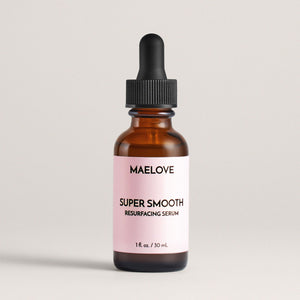Today we address the question, can I use Vitamin C and Hydroxy Acids (like AHAs and BHAs) together?
The short answer is -- yes you can! As long as your skin can tolerate it and you don’t get irritation from this combination.
Most Vitamin C skincare products you see on the market use ascorbic acid, because it’s the most researched and proven form of Vitamin C.
Ascorbic acid is water soluble, so it tends to come in a lightweight serum form, which a lot of us are familiar with. The tricky part is - how do you make ascorbic acid get absorbed into the skin? Because as you know, our skin is waterproof.
Pinnell and colleagues, researchers at Duke University, published work in 2001 that showed ascorbic acid can penetrate through the skin barrier if formulated in a solution where the pH is 3.5 or lower.
So the Vitamin C serums on the market tend to be on the acidic side. For comparison: pH of 3.5 is about the same acidity as white wine.
And of course hydroxy acid products tend to be acidic as well.
Your skin is naturally slightly acidic and functions optimally at an acidic pH. This is because a natural acidic pH helps your skin fight off bacteria. Remember, your skin is your first line of defense against microbes from the environment.
Second, enzymes that make ceramides (a necessary component of the skin) function optimally in a pH below 5, while a high skin pH activates serine proteases that degrade these enzymes.
Hence a healthy, waterproof skin barrier relies on an acidic pH. So acidic formulas aren't necessarily bad for your skin. In fact, studies show that an acidic pH topical can actually be helpful to your skin.
For example, in 2020, Valle-Gonzalez and colleagues applied a glycolic acid formula in the range of pH 3 to 4.5 and showed it was antibacterial against the acne forming bacteria C. acnes, and the lower the pH, the better the antibacterial activity.
Further, in 2010, Hachem and colleagues showed that hyper-acidifying the skin barrier with polyhydroxy acids lead to a stronger skin barrier in part by increasing ceramide production by enzymes and inhibiting their breakdown by serine proteases.
Even though acidic topicals can benefit your skin, some people, especially those with sensitive skin, can find them irritating. This is because those with sensitive skin often have a compromised and leaky skin barrier. So topicals that should have trouble crossing the skin barrier or should stay on the surface, don’t, and this can irritate the skin.
You can imagine that for some, using a Vitamin C product which is acidic, and a hydroxy acid product which is also acidic, can cause redness.
Just a side note: if you have easily irritated, sensitive skin, use niacinamide to fortify your skin barrier. In our opinion, niacinamide is the best skin conditioning ingredient on the market.
Click here to read our Deep Guide to Niacinamide
So to curb irritation, this is what I recommend: start out by using Vitamin C and Hydroxy Acids separately.
Use Vitamin C serums in the morning as their antioxidant activity will fight the free radicals that are generated by UV rays during the day.
Then use hydroxy acids like glycolic acid in the evenings as glycolic acid can increase sensitivity to the sun.
If that doesn’t work, another option is to switch to a hydroxy acid product that might be more suitable for sensitive skin, such as a polyhydroxy acid product which tends to be more mild. We’ll also have a video on polyhydroxy acids in the future.
However, for those of you that don’t experience any irritation or your skin has acclimated to both products, you can most definitely use them together now in one routine. There is no reason you can’t comfortably use both ingredients together.
Relevant products we recommend
References
Pinnell SR, Yang H, Omar M, Riviere NM, DeBuys HV, Walker LC, Wang Y, Levine M (2001). “Topical L-Ascorbic Acid: Percutaneous Absorption Studies.” Dermatol Surg 27: 137-142..
Valle-Gonzalez ER, Jackman JA, Yoon BK, Mokrzecka N, Cho MJ (2020). pH-Dependent Antibacterial Activity of Glycolic Acid: Implications for Anti-Acne Formulations. Sci Rep 10:7491. https://doi.org/10.1038/s41598-020-64545-9.
Hachem JP, Roelandt T, Schurer N, Pu X, Fluhr J, Giddelo C, Man MQ, Crumrine D, Roseeuw D, Feingold KR, Mauro T, Elias PM (2010). “Acute Acidification of Stratum Corneum Membrane Domains Using Polyhydroxyl Acids Improve Lipid Processing and Inhibits Degradation of Corneodesmosomes.” J Invest Dermatol 130: 500-510.





